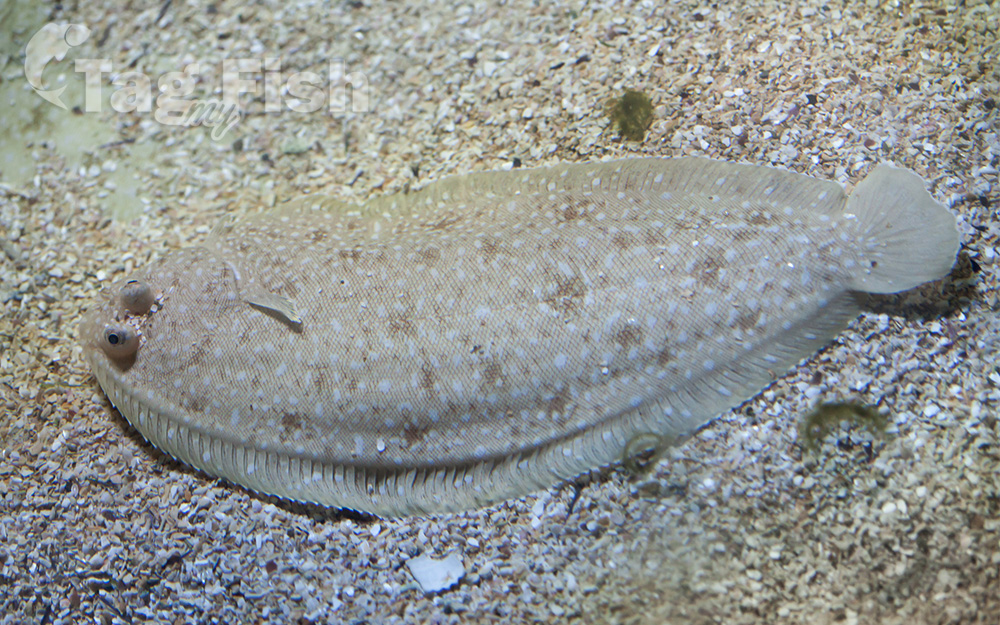Senegalese sole
(Solea senegalensis)

Classification
General data
Solea senegalensis, the Senegalese sole, is a species of flatfish from the family of the true soles, the Soleidae, from the eastern Atlantic and the Mediterranean Sea.
Solea senegalensis is very similar to the common sole and like it, it has a flattened, oval body with the dorsal fin starting on the upper profile of the head to the front of the upper eye.
The dorsal fin has 73–86 rays, the anal fin has 61–74 rays and there is a well developed pectoral fin on each side of its body which has 7–10 rays. There are numerous, small, hair like fringes on the blind side of the head and the distance between the upper eye and the dorsal profile of the head is obviously greater than the diameter of the eye. The anterior nostril on the blind-side is surrounded by a small ridge but it is not enlarged.[4] The caudal fin is attached to the last rays of the dorsal and anal fins by a narrow membrane.
The lateral line is made up of 120–138 pored scales. It is greyish brown in colour on the eyed side marked with numerous blue spots, the spots tend to disappear in dead specimens. The pectoral fin on the eyed side has a nearly black membrane contrasting with cream coloured fin rays while the caudal fin is plain. The blind side is whitish.
The main identifying feature which separates this species from the common sole is the black colour of the membrane between the rays on the pectoral fin on its eyed-side whereas the common sole has a neat black spot close to the margin of the eyed side pectoral fin.
It grows to a standard length of 60 cm but is more usually 45 cm.
Solea senegalensis occurs in the eastern Atlantic from southern Great Britain and Ireland, where it is rare, to Angola, including the Canary Islands. It entered the Mediterranean Sea via Gibraltar in the early 20th century, fast expanded in the western Basin[6] as far east as northern Tunisia where it is an important resource and is now found in the Aegean Sea till the Sea of Marmara.











